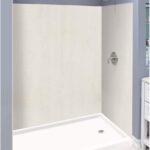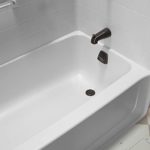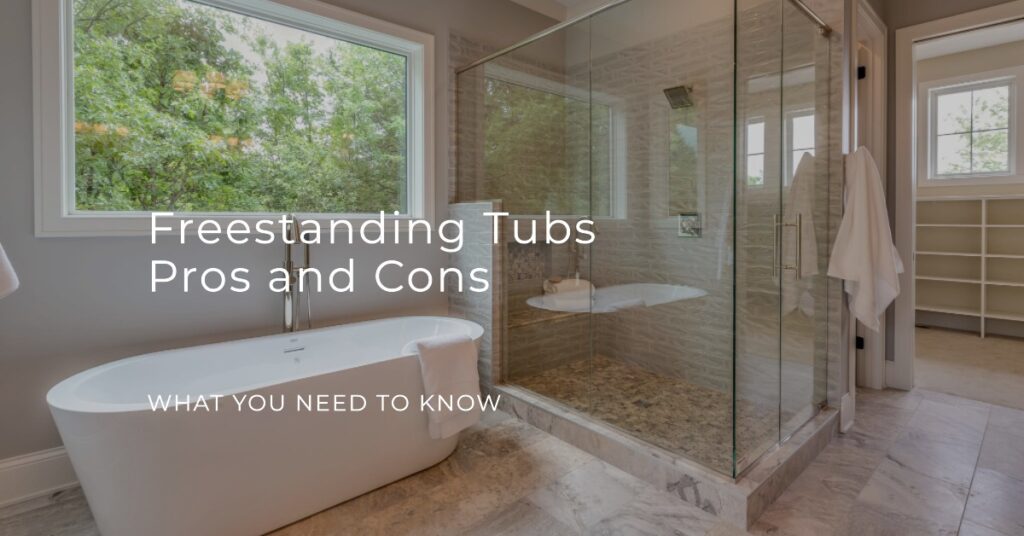
Are you considering adding a bathtub to your bathroom or replacing an old one? Have you thought about installing a freestanding tub? Freestanding tubs are becoming increasingly popular due to their elegant design and versatile installation options. However, before making a decision, it’s essential to weigh the pros and cons.
The Ultimate Guide to Finding the Best Cast Iron Bathtub: Want to learn more about the benefits of a cast iron bathtub and how to choose the perfect one for your bathroom? Check out this comprehensive guide.
Pros and Cons of Freestanding Tubs
| Pros | Cons |
| Flexibility in terms of placement | Space requirements |
| Unique and stylish design | Costly compared to built-in tubs |
| Easy installation | Maintenance and upkeep can be challenging |
| Perfect for renovating older homes | |
| Doesn’t block off view of bathroom | |
| Soaking depth is usually deeper | |
| Easy to clean | |
| Comfortable to use |
I. What is a Freestanding Tub?
A freestanding tub is a type of bathtub that stands alone, separate from the walls or any surrounding structures. It’s not attached to the floor, wall, or ceiling like a traditional built-in bathtub. These tubs come in various shapes, sizes, and materials and can add a touch of luxury and sophistication to any bathroom.
II. Importance of Considering the Pros and Cons
While freestanding tubs can offer several advantages, they may not be suitable for everyone. It’s essential to consider the pros and cons before making a final decision. Factors such as space availability, cost, and maintenance are critical when choosing the right bathtub for your bathroom.
In this article, we’ll explore the pros and cons of freestanding tubs, popular types of tubs, and installation and maintenance tips to help you make an informed decision. Let’s dive in!
III. Disadvantages of Freestanding Tubs
Despite the many advantages of freestanding tubs, they are not without their downsides. Here are some potential disadvantages to consider before making a decision:
A. Space
Freestanding tubs can take up a lot of space, so it’s important to make sure you have enough room in your bathroom to accommodate one. This is especially true for larger models, which can be quite spacious. If you have a smaller bathroom, a freestanding tub may not be the best choice, as it can make the space feel cramped and crowded.
B. Costly
Freestanding tubs can be quite expensive, especially when compared to other types of bathtubs. This is because they are often made from high-quality materials like cast iron or acrylic, which can be costly to manufacture. In addition to the initial purchase price, you’ll also need to consider the cost of installation, which can be more complicated than with traditional built-in tubs.
C. Maintenance and Upkeep
Freestanding tubs require regular cleaning and maintenance to keep them looking their best. Depending on the type of material your tub is made from, you may need to use specific cleaning products or avoid certain types of cleaning agents altogether. In addition, because the tub is freestanding, you may need to clean around and underneath it more often than you would with a traditional built-in tub.
Revamp Your Bathroom with a Resurfaced Cast Iron Tub: If you’re looking for a cost-effective way to update your bathroom, check out this guide on resurfacing a cast iron tub.
IV. Choosing the Right Freestanding Tub
If you’ve decided that a freestanding tub is right for you, there are a few things to consider when choosing the perfect model. Here are some factors to keep in mind:
A. Factors to Consider
- Size and Shape: Freestanding tubs come in a variety of sizes and shapes, so it’s important to choose one that will fit comfortably in your bathroom. Consider the size of the room, as well as the size of the tub itself, to make sure you have enough space for everything.
- Material: Freestanding tubs can be made from a variety of materials, including cast iron, acrylic, and stone. Each material has its own pros and cons, so it’s important to choose one that fits your needs and preferences.
- Style: Freestanding tubs come in a range of styles, from classic clawfoot tubs to modern, minimalist designs. Consider the overall aesthetic of your bathroom when choosing a tub style.
- Features: Some freestanding tubs come with additional features like built-in jets or a built-in overflow drain. Consider which features are important to you when making your decision.
Acrylic vs. Cast Iron Bathtubs: Which One is Right for You? Not sure whether to choose an acrylic or cast iron bathtub? This article compares the pros and cons of each to help you make an informed decision: Acrylic vs. Cast Iron Bathtubs.
B. Popular Types of Freestanding Tubs
- Clawfoot Tubs: These classic tubs feature feet that resemble animal claws, giving them a vintage feel. They’re typically made from cast iron and are often quite heavy.
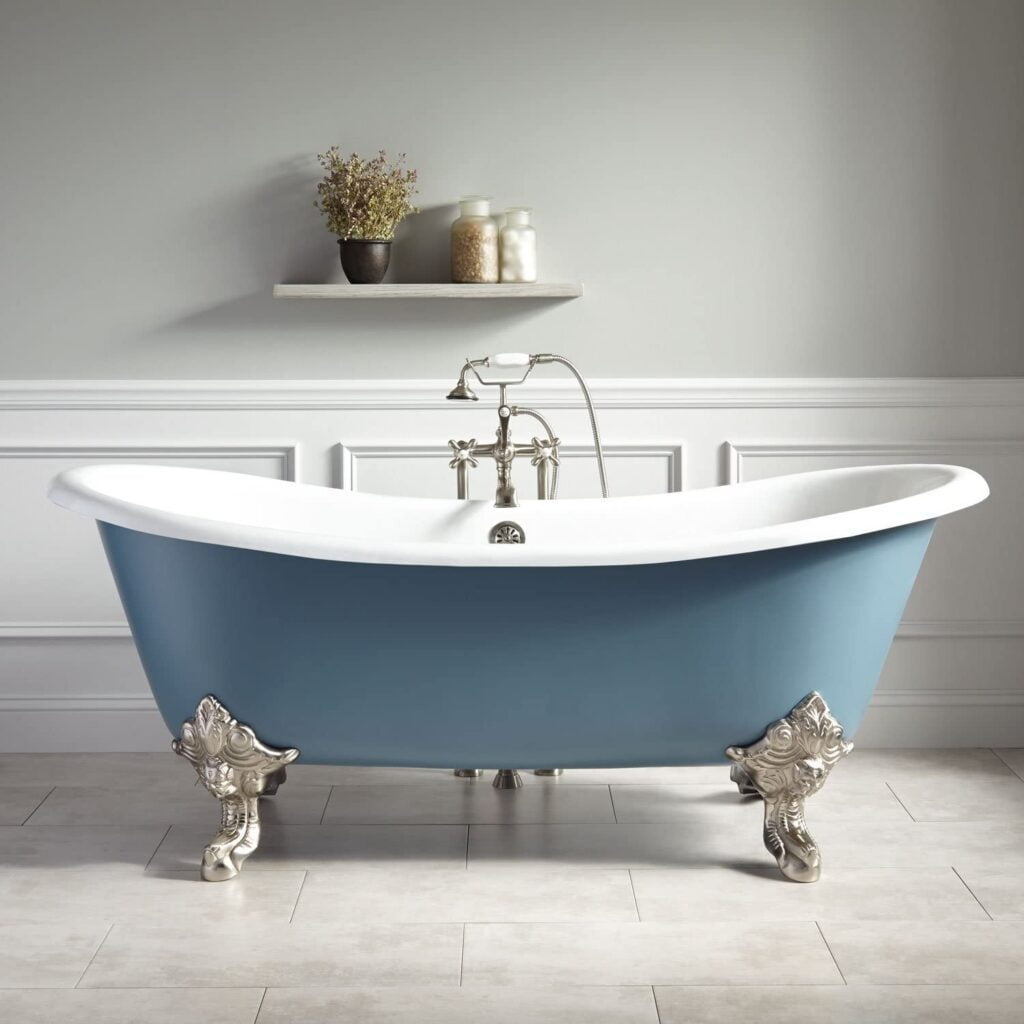
- Pedestal Tubs: Pedestal tubs are supported by a base or pedestal rather than feet. They’re often made from acrylic and are a good choice for smaller bathrooms.
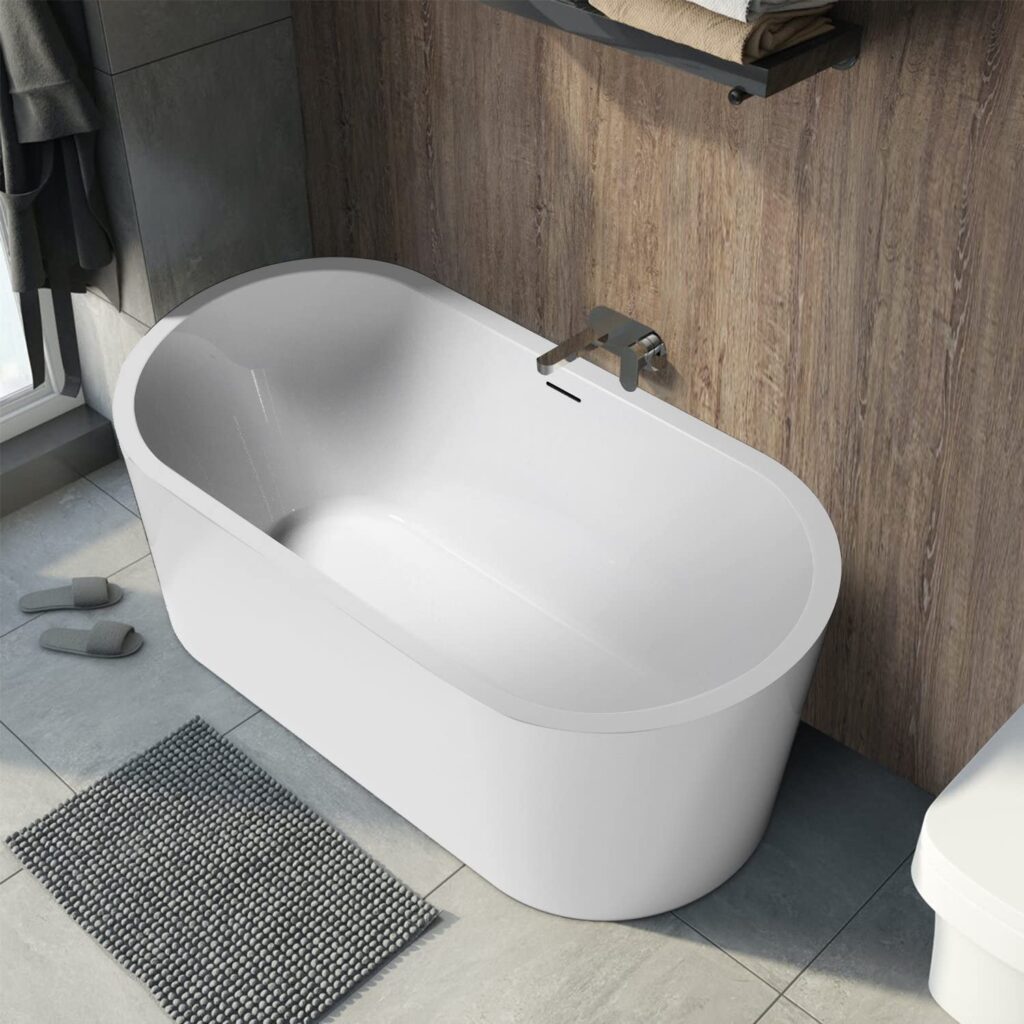
- Slipper Tubs: Slipper tubs feature a raised end that provides extra support for your back and neck. They’re often made from cast iron and are a good choice for people who enjoy longer soaking sessions.
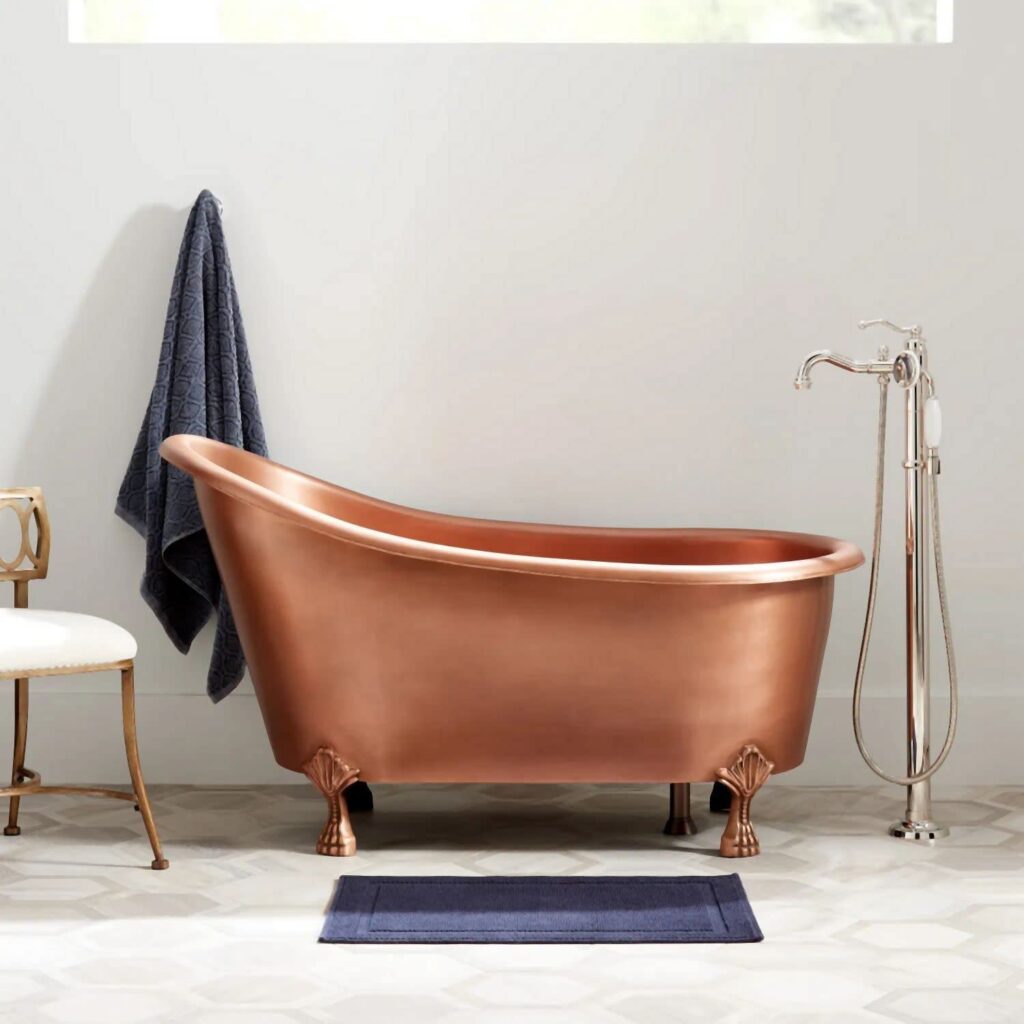
- Japanese Soaking Tubs: These tubs are designed for a deep, full-body soak and are often made from wood or stone. They’re a good choice for people who enjoy a spa-like experience.
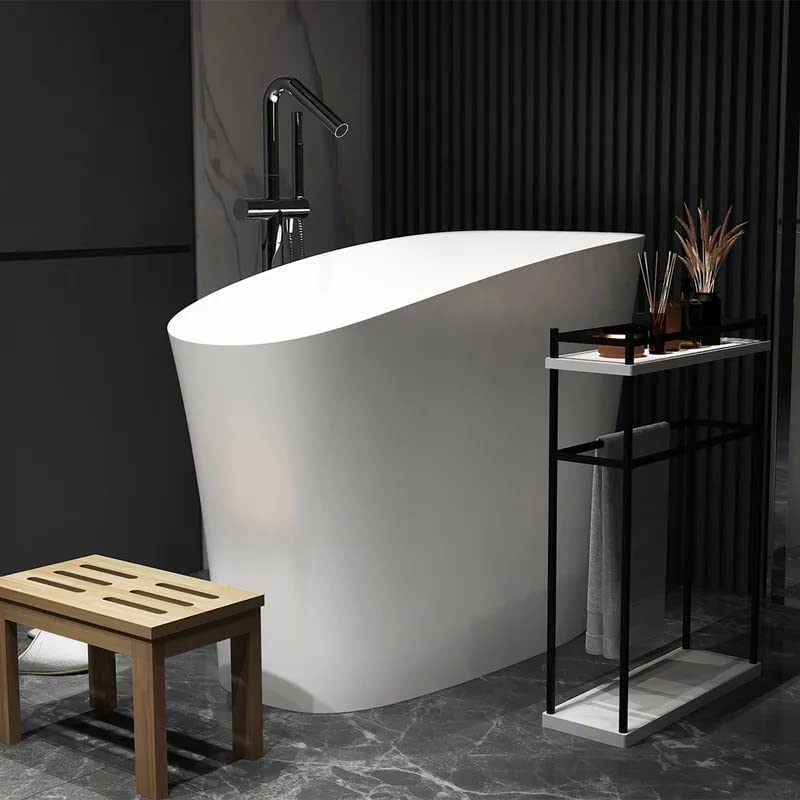
C. Installation and Maintenance Tips
- Professional Installation: Because freestanding tubs can be heavy and difficult to install, it’s often best to have a professional handle the installation.
FAQs
While freestanding baths have many advantages, they also have a few downsides to consider. The biggest downside is the space they require. They typically take up more space than built-in tubs and may not fit in smaller bathrooms. Additionally, freestanding tubs can be more expensive to purchase and install compared to traditional built-in tubs. Lastly, cleaning and maintaining a freestanding tub can be more challenging due to their shape and size.
Freestanding baths can be a great idea, but it really depends on individual preferences and circumstances. They offer a luxurious and stylish look to any bathroom, making it a centerpiece. Freestanding baths are also available in a variety of materials, styles, and sizes, which means there’s a perfect option for everyone. If you have enough space in your bathroom, enjoy taking baths, and want to create a spa-like atmosphere, then a freestanding bath might be a perfect fit for you.
Freestanding bathtubs can be practical, but again, it depends on individual circumstances. They offer more flexibility in terms of placement, allowing them to be placed anywhere in the bathroom, including the middle of the room. They are also easy to install and come in a range of sizes and styles, which means there’s a perfect option for everyone. However, if you have a smaller bathroom, then a freestanding bath might not be practical since they require more space.
Freestanding tubs have gained popularity because of their stylish and luxurious design. They offer a unique and elegant look to any bathroom and create a relaxing and spa-like atmosphere. They come in various sizes, materials, and shapes, which means there’s a perfect option for everyone. Additionally, freestanding tubs can be placed anywhere in the bathroom, giving you more flexibility in terms of design and placement.
Yes, freestanding baths can go against a wall, but it depends on the design of the tub and the type of installation. Some freestanding tubs are designed to be installed against the wall, while others are not. If you’re considering a freestanding tub, it’s best to consult with a professional to determine if the tub you choose can be installed against the wall.
When buying a freestanding bath, there are several factors to consider. First, consider the size and shape of the tub to make sure it fits in your bathroom and meets your needs. Second, think about the material of the tub, whether it’s acrylic, stone, or another material, and how it will impact your comfort and maintenance. Third, consider the style and design of the tub, whether it’s modern or traditional, to ensure it complements the look of your bathroom. Finally, think about any additional features you may want, such as jets or built-in lighting, and whether they fit within your budget.
Upgrade Your Bathroom with the Best Bathtub Shower Wall: Looking for the best bathtub shower wall to enhance your bathroom’s functionality and style? Check out our top picks in this article.
V. Conclusion
In conclusion, freestanding tubs offer a range of benefits and drawbacks that should be carefully considered before making a decision. On the positive side, these tubs are highly flexible in terms of placement, with a wide range of sizes, shapes, materials, and styles to choose from. They can enhance the design and look of your bathroom, provide deep soaking depth, and are easy to clean and maintain.
However, it is important to keep in mind the potential drawbacks, such as the high cost and space requirements, as well as the need for regular maintenance and upkeep. These factors may make a freestanding tub less practical for some households, especially those with limited space or a tight budget.
That being said, if you are interested in investing in a freestanding tub, taking the time to choose the right one is essential. Consider factors such as size, shape, material, style, and features, and explore popular types such as clawfoot, pedestal, slipper, and Japanese soaking tubs. It is also important to have your tub professionally installed and to maintain it regularly to ensure its longevity and performance.
Overall, the decision to invest in a freestanding tub ultimately depends on your personal preferences and needs. By carefully weighing the pros and cons and choosing the right tub for your home, you can create a luxurious and relaxing bathroom oasis that you and your family can enjoy for years to come.

